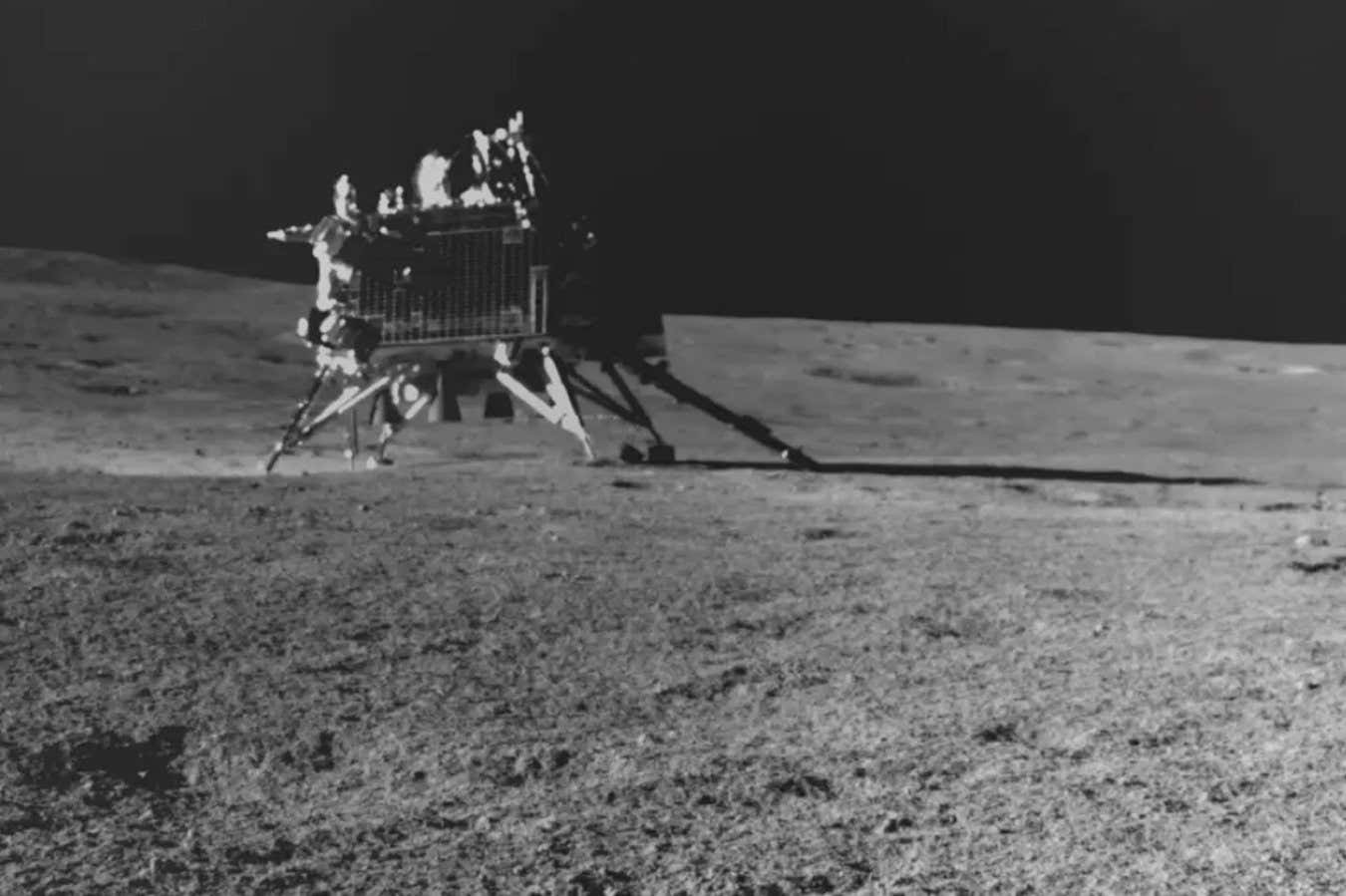Mission engineers had hoped that the Vikram lander and Pragyan rover could survive the freezing lunar night, but the sun rose on their landing site on 22 September and there have been no signals from the craft
By Matthew Sparkes
25 September 2023
The Vikram lander hasn’t woken up on the surface of the moon
ISRO
The Indian Space Research Organisation (ISRO) is still attempting to re-establish communications with its Chandrayaan-3 mission’s moon lander and rover, but experts say hopes are fading as suspicions grow that the spacecraft have succumbed to brutally cold temperatures during the lunar night.
ISRO’s Vikram lander touched down on the surface on 23 August before releasing the Pragyan rover. Both craft successfully carried out their scientific experiments and transmitted data back to Earth, and the mission had already proven a great success.
But after the landing, senior engineers said they were confident that the craft would be able to survive the lunar night and carry out more work. Around two weeks after the mission began – one single period of lunar daylight – both devices went into “sleep mode” and prepared for conditions as low as -238°C that could destroy their electronic components.
Advertisement
Following a long wait, the lunar terminator – the line between night and day – crossed the Chandrayaan-3 landing site around 22 September, bathing the craft in sunlight and theoretically allowing them to use their solar panels to charge their batteries and boot up their onboard computers once again. But there have been no signs of life.
ISRO tweeted on 22 September that it had been attempting to establish contact with the craft without success. Since then, it has provided no further updates and ISRO’s press office didn’t respond to a request for comment. On 25 September, former ISRO chief A. S. Kiran Kumar told the BBC that the “chances of reawakening are dimming with each passing hour”.
David Cullen at Cranfield University, UK, says it shouldn’t be considered a failure if Vikram and Pragyan don’t wake up, as the Chandrayaan-3 mission was designed to achieve its objectives in a single lunar day.
